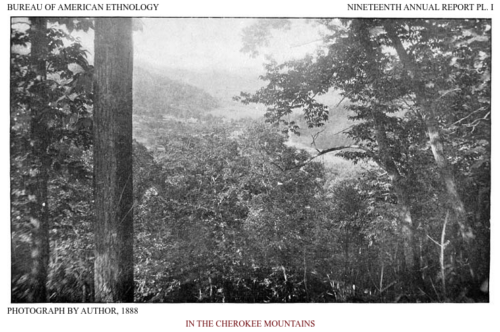
No, I’m not talking about cat-a-wampus.
…a noun from 1843, as a name for an imaginary hobgoblin or fright, perhaps from influence of catamount… 1660s as a shortening of cat-o’-mountain (1610s), from cat of the mountain (mid-15c.), a name aplied to various large wild cats of the Old World. From 1794 in reference to the lynx, puma, or cougar of the United States and Canada.
And regardless of 1917 dialect notes trying to confuse things even further, I’m talking about the legend of the Wampus Cat, allegedly from the Cherokee Nation.
Cherokee culture is rich and diverse, and interpretations of their legends may vary among different individuals and communities within the Cherokee Nation.
Among the Cherokee people, one finds striking examples of the high status afforded to women in their society. The legend of Running Deer illustrates the strength, courage and vital roles Cherokee women embodied.
Let me begin by clarifying that Running Deer should not be confused with the spiritual figure Nunnehi, or Deer Woman. Some have mistakenly conflated names and legends in America, perhaps due to oversimplified depictions in mid-20th century popular culture. We must be careful not to allow such misconceptions to proliferate.
The story tells of how the malicious spirit Ew’ah, embodying madness and despair, threatened the well being of the Cherokee community. Running Deer arose as the champion to confront this dark force, driven by her desire to protect her people, including her husband who had fallen under Ew’ah’s torment. Her quest transcended mere vengeance – it highlighted the equal standing of Cherokee women as leaders, hunters and guardians alongside men.
Descending from a lineage of powerful female spirit-talkers, Running Deer harnessed not just physical fortitude, but the ancestral wisdom and fierceness symbolized by the mountain cat. She crafted a panther mask, invoking that wild spirit energy as she purposefully entered Ew’ah’s dark realm. In an epic battle echoing through the ancient forests, Running Deer’s cunning and bravery overcame the spirit’s maddening influence, until Ew’ah was vanquished by his own unhinged rage.
Through this heroic victory, Running Deer exemplified the steadfast spirit embodied by Cherokee women. As both spirit-talker and protector of the home, her essence became eternally intertwined with the legendary Wampus cat – a prowling guardian fending off threats to Cherokee lands. Her transformation into this symbolic form represented an integration of her civilized and primal aspects required to face such daunting challenges.
For the Cherokee, this legend celebrates the multifaceted strengths and wisdom that women contributed to the tribe’s survival – nurturing life forces as vital as successful hunting. Her tale has been passed down over generations as a source of empowerment and balance between the civilized and the untamed.
As historians, we must appreciate how such narratives, when interpreted through a systemic perspective, reveal profound truths about a culture’s values and societal organization. The Wampus cat illuminates the revered position of Cherokee women as respected equals to men in both spiritual and physical realms.
It serves as a powerful symbolic model for gender equality.